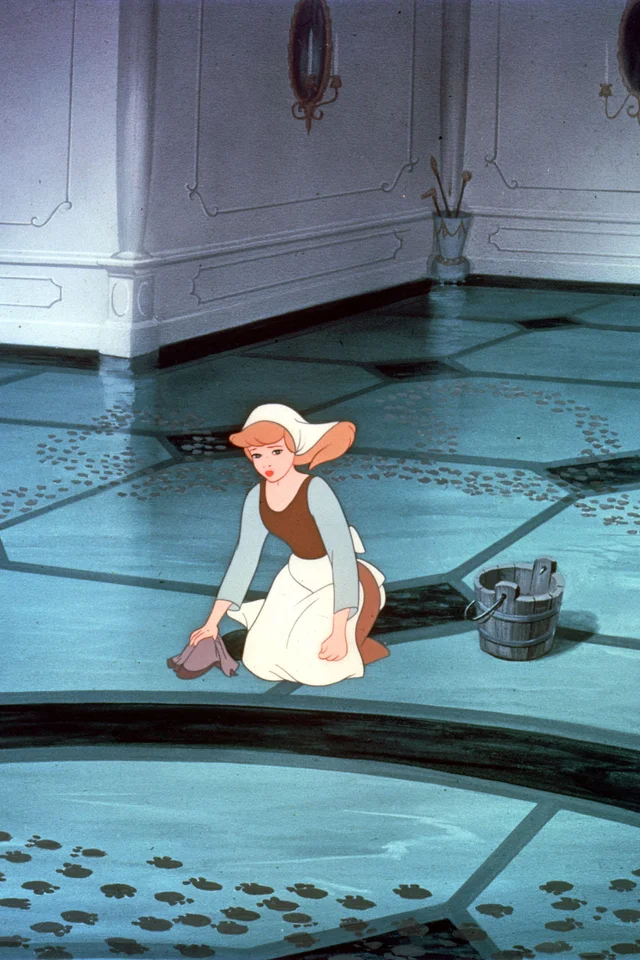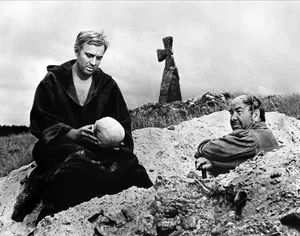Two characters find their way
Because his father is dead, Prince Hamlet returns to Helsingør Castle. He realizes that something is rotten in the state of Denmark. Cinderella, on the other hand, arrives at a fairytale castle, finds everything magnificent, and wins the handsome prince. Is it a coincidence that Schostakowitsch and Prokofjew happened to come across these stories?

Prokofjew and Schostakowitsch draw on fairy tales and Shakespearean material to deal with war and reality through music. In Cinderella, Prokofjew seeks refuge in tradition, while in Hamlet, Schostakowitsch reflects on criticism of power and personal identification.
It seems significant that Sergei Prokofjew chose to write a fairy tale ballet between 1941 and 1945. A few years earlier, he had returned carefree from the West to the Soviet Union and enjoyed success in both East and West with film music and the musical fairy tale Peter and the Wolf. After Romeo and Juliet, he once again took on ballet music with Cinderella (Russian: Золушка), but by now he had to realize that war and terror were also affecting his life.
Instead of tours abroad, there were «relocations» to Kazakhstan. Prokofjew could not work in peace. And when his ballet is finally finished, it is reviewed in a lengthy meeting of colleagues and officials. Schostakowitsch is also present. Prokofjew himself gets back to someone sick. One participant in the meeting predicts the piece will be a success, «because this music builds solid bridges to Glazunov and Tchaikovsky.»
These «bridges» are evident in Prokofiev's narrative ballet with its classical forms. In it, the composer seeks not cheap escapism, but self-salvation – in the timelessness of tradition, in the wonder world of childhood, in the universality of folk tales. Wherever that may be, because anything is better than the nightmare of his present.
In this light, are the plaintive sounds really just a scenic expression of Cinderella's hard work? Is the wonderfully invented music of longing really only for her princess dream? And are the dark timbres and threatening undertones, which even the most beautiful waltz cannot completely shake off, really just a consequence of Prokofiev's personal style and his preference for the contrabassoon and tuba? Dmitri Schostakowitsch never indulged in fairy-tale illusions.
May this have been because he lost his father at an early age and had to earn money. He did so as a cinema pianist – and drew on this experience throughout his life as a composer. For example, in his more than thirty film scores. He worked several times with the director Grigori Kozintsev (1905–1973). For Kosintsev's 1964 film adaptation of Shakespeare's Hamlet, Schostakowitsch composed a harsh score that matched Kosintsev's black-and-white imagery, with its blazing flames, crashing waves, and rough gray-black castle walls.
But even Schostakowitsch sometimes «builds bridges to Tchaikovsky.» However, this is only in very specific scenes. For example, when Hamlet muses: «How disgusting, insipid, shallow, and unproductive all the bustle of this world seems to me.» Here, his film music explicitly conveys a meaning that remains unspoken in Schostakowitsch's symphonies, for example, where there are similarly lively passages.
The search for such interpretative keys does not always lead to the desired result. But it is always seductive, because this experimental film score echoes elsewhere later on. Schostakowitsch concludes his 15th and last symphony from 1971 with the same ghostly layers of percussion that he invented for the Hamlet film. Did he recognize himself in Hamlet's disillusioned view of power and death? In his determination not to be merely an «instrument» of the powerful? As Hamlet puts it: «You may displease me, but you cannot play me.»
Author: Felix Michel
